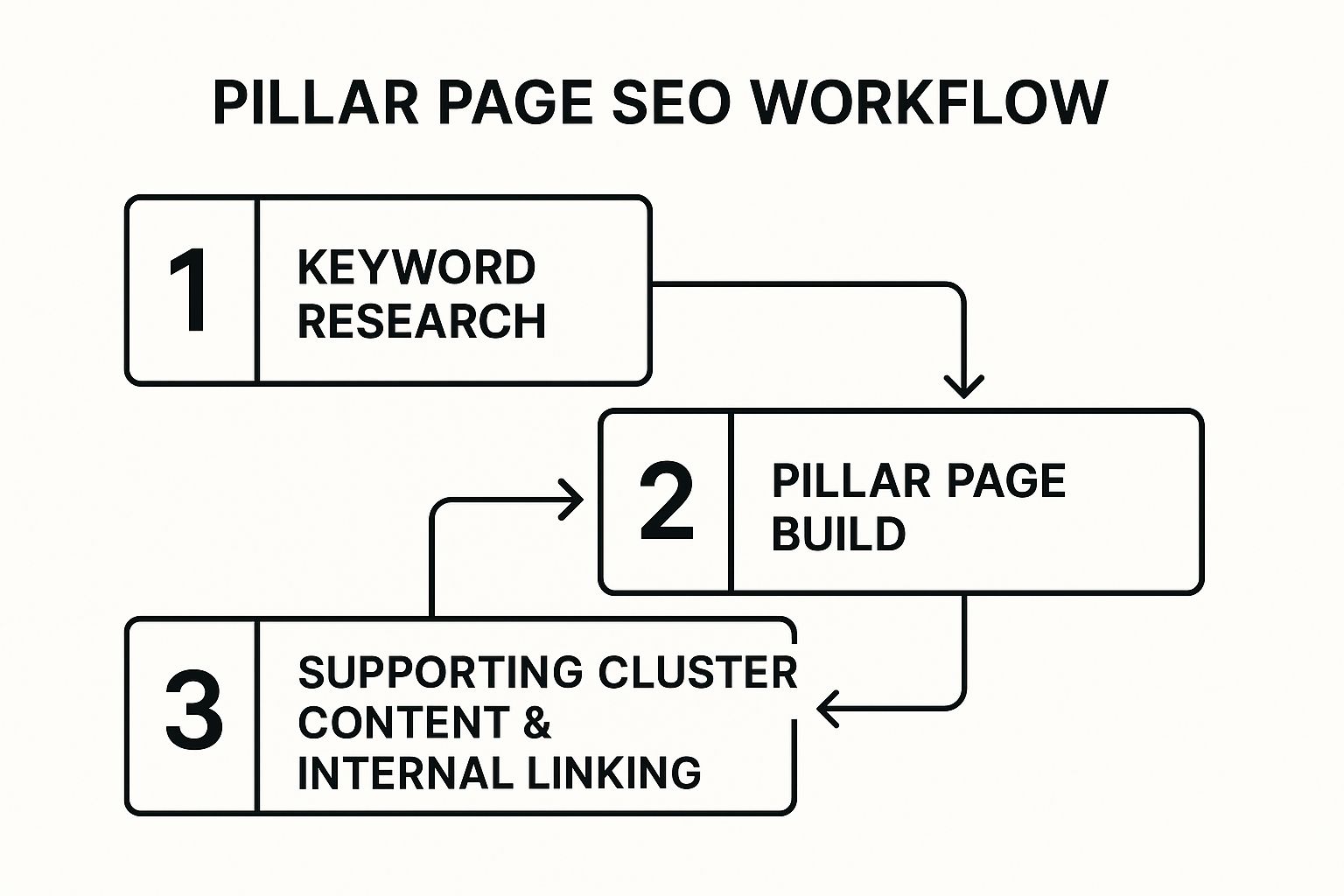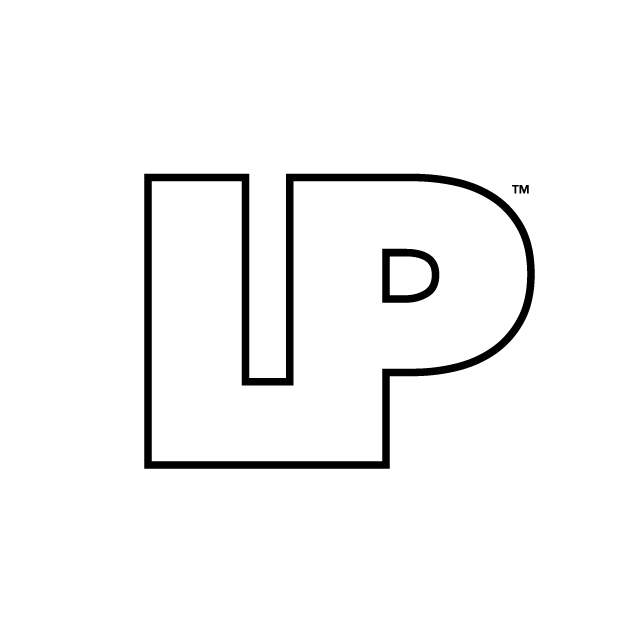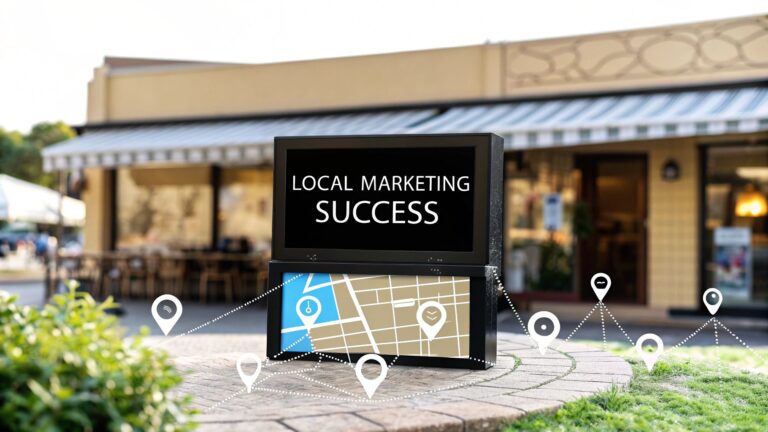In digital marketing, theory only gets you so far. Real, sustainable growth comes from understanding what works in practice, which is why dissecting successful SEO case studies is essential for any business owner looking to improve their online visibility. This article moves beyond generic advice to break down the precise strategies used by top brands like HubSpot, Backlinko, and Canva to dominate search rankings.
For franchises and small businesses, these examples are not just inspiring; they are actionable roadmaps. We provide a deep strategic analysis, revealing the specific tactics behind their monumental growth and offering practical takeaways you can apply directly to your own campaigns. The goal is to equip you with replicable methods, whether you're aiming for local dominance or national recognition. Some results can even be achieved with surprising speed. For a compelling example of rapid growth, explore a case study detailing how a marketing agency achieved #1 ranking in a highly competitive niche.
By examining the data-backed and proven results from these diverse campaigns, you will gain the strategic knowledge needed to elevate your own SEO game. Let’s explore what we can learn from these winning strategies.
1. HubSpot's Pillar Page SEO Strategy
Perhaps one of the most influential seo case studies in modern content marketing, HubSpot’s pivot to a pillar page and topic cluster model fundamentally changed how businesses approach topical authority. This strategy involves creating a single, comprehensive "pillar" page that acts as a definitive guide on a broad topic. This central hub then links out to more specific "cluster" content (like blog posts or articles) that delve into subtopics in greater detail.
The results speak for themselves. HubSpot reported a 104% increase in organic traffic over two years after implementing this model. Their marketing pillar page, for instance, now generates over 100,000 monthly visits and ranks for thousands of keywords. This success stems from its ability to organize content logically, making it easier for search engines to understand the site's expertise on a subject.
The Strategy and Key Tactics
The core of this approach is creating an internal linking structure that signals expertise. The pillar page links to every cluster page, and every cluster page links back to the main pillar. This closed loop demonstrates a deep, well-organized knowledge base, which Google rewards with higher rankings. A practical insight here is that the anchor text used for these internal links is critical. For example, when linking from the "Emergency Plumbing Solutions" pillar page to a cluster post, using specific anchor text like "guide to clearing a clogged drain" is more effective than a generic "click here."
Key Strategic Insight: By consolidating authority on a single pillar page instead of diluting it across multiple, competing blog posts, HubSpot built an SEO moat. They transformed their site architecture from a scattered collection of articles into an organized, authoritative library.
Actionable Takeaways for Your Business
Any small business or franchise can replicate this model. For example, a local plumbing franchise could create a pillar page on "Emergency Plumbing Solutions" and link out to cluster content like "How to Fix a Leaky Faucet," "Clearing a Clogged Drain," and "Water Heater Maintenance Tips."
- Start with Broad Topics: Identify the main problems your customers face. These will become your pillar page topics.
- Build a Content Hub: Create a comprehensive, long-form guide for your pillar page. This should answer the main questions but leave room for deeper dives in cluster posts.
- Develop Cluster Content: Write detailed articles on subtopics, ensuring each one links back to the main pillar. A practical tip is to look at the "People Also Ask" section on Google for your pillar topic to generate ideas for cluster content.
This infographic outlines the foundational workflow for building your own pillar page strategy.

The visualization illustrates how each step builds upon the last, from foundational research to the interconnected content structure that drives topical authority.
2. Backlinko's Skyscraper Technique Case Study
A cornerstone of modern link-building, the "Skyscraper Technique," popularized by Brian Dean of Backlinko, provides a repeatable system for earning high-authority backlinks. This strategy hinges on a simple but powerful premise: find popular content with lots of backlinks, create a piece that is significantly better, and then ask those linking to the original to link to your superior asset instead.

The initial seo case studies from Backlinko were staggering. In one famous example, Dean used this method to double his organic search traffic in just 14 days. By creating a definitive guide to Google's ranking factors, he earned links from sites like Forbes and Entrepreneur, demonstrating the technique's power to attract editorial links at scale. This approach transformed content creation from a guessing game into a calculated strategy for SEO success.
The Strategy and Key Tactics
The Skyscraper Technique is a three-step process: find link-worthy content, make it better, and reach out to the right people. "Better" doesn't just mean longer; it means more up-to-date, better designed, more thorough, and including original data or visuals. The outreach phase is critical and relies on personalized emails that clearly explain why your content is a better resource for the site owner's audience. A key practical insight is to segment your outreach list. Target first the sites that have a clear reason to update their link (e.g., they are linking to a 404 page or a severely outdated resource).
Key Strategic Insight: Instead of creating content and hoping for links, this technique reverses the process. It identifies proven demand (existing backlinks) and creates a product (the content) specifically engineered to capture that demand, drastically increasing the odds of success.
Actionable Takeaways for Your Business
Even a small local business can leverage this strategy. A real estate franchise, for instance, could find a popular but outdated "First-Time Home Buyer's Guide" for their city, create a new version with updated market stats, a mortgage calculator, and video testimonials, then reach out to local bloggers and news sites who linked to the old one.
- Find Proven Content: Use tools like Ahrefs or SEMrush to find pages in your niche with many backlinks.
- Create "10x" Content: Improve upon the original by adding more depth, fresh data, better design, or multimedia elements. For example, turn a text-only list into an infographic or add a "how-to" video.
- Conduct Strategic Outreach: Identify who linked to the original and send personalized emails showcasing your superior resource. A practical example of a good outreach hook is: "I saw you linked to [Old Article]. I just published an updated guide for 2025 with current market data that your readers might find more useful."
This approach is one of many effective link-building methods. For those interested in a wider array of options, you can explore various backlink strategies for 2021. This video breaks down the process further:
3. Ahrefs' Content Marketing and SEO Integration
Ahrefs provides one of the most compelling seo case studies on how to turn a blog into a powerful customer acquisition engine. By perfectly integrating their product with their content marketing, they grew their blog’s organic traffic to over 400,000 monthly visitors. Their strategy centers on creating deeply valuable, data-driven content that solves the exact problems their target audience searches for.
Their success is built on a simple yet powerful premise: create content that is so useful, it promotes the product by itself. Posts like their definitive "SEO Checklist" and "Keyword Research" guides rank at the top of search results for highly competitive terms, directly driving qualified leads and tool signups. This approach demonstrates how to build authority by becoming the go-to resource in a niche.
The Strategy and Key Tactics
Ahrefs’ strategy is to "eat their own dog food." They use their own suite of SEO tools to identify high-traffic, high-intent keywords and then create best-in-class content to rank for them. They focus on producing comprehensive guides, tutorials, and data studies that are difficult for competitors to replicate because they are powered by Ahrefs' proprietary data. A key practical insight is their focus on "business potential." They don't just chase traffic; they prioritize keywords that represent problems their tool can solve, ensuring traffic converts into users. Ahrefs' success underscores the importance of well-researched content, a principle further elaborated by understanding the critical role of keywords in content strategy.
Key Strategic Insight: Ahrefs doesn't just write about SEO; they create content that requires their tool to fully implement the advice. This product-led content model creates a natural, non-pushy funnel from reader to paying customer.
Actionable Takeaways for Your Business
Even without a proprietary dataset, any business can apply these principles. A local accounting franchise, for instance, can create content around "Small Business Tax Deductions in [State]" and use their expertise to provide unique, localized insights.
- Solve Problems with Content: Identify your customers' biggest pain points and create content that solves them. A practical way to do this is to interview your sales or customer service team about the most common questions they receive.
- Focus on Business Potential: Target keywords that not only have high search volume but also attract potential customers. For an accounting firm, "how to file small business taxes" is better than "what is a tax."
- Create Irreplaceable Resources: Develop guides and tutorials that are more comprehensive and helpful than anything else available. For instance, include a downloadable checklist or a free spreadsheet template.
By focusing on content that genuinely helps your audience, you build trust and authority that naturally leads to business growth. To explore different approaches, you can learn more about the different types of content marketing.
4. NerdWallet's Programmatic SEO Success
NerdWallet provides one of the most compelling seo case studies on the power of programmatic SEO, a strategy for creating thousands of unique pages at scale. By leveraging data and templates, they built an empire of targeted landing pages for long-tail keywords, capturing massive amounts of high-intent organic traffic that competitors simply couldn't address manually.
The results are staggering. NerdWallet dominates search results for countless financial queries, from "best credit cards in Austin" to "mortgage calculator for Texas." This approach allowed them to generate thousands of highly specific, valuable pages that answer precise user questions, establishing them as an undisputed authority in the personal finance space. This success comes from turning a database of financial information into a massive web of useful, niche content.
The Strategy and Key Tactics
The core of programmatic SEO is using a template-based system to generate pages. NerdWallet created a master template for different page types, like "best credit cards" or "mortgage rates." This template was then programmatically populated with data specific to different variables, such as cities, states, or financial institutions, creating thousands of unique page variations from a single design. A crucial insight is that each page, while template-based, contains unique data combinations that provide genuine value. For example, their "best credit cards" page for a specific city might pull in localized data or user reviews relevant to that area.
Key Strategic Insight: NerdWallet weaponized data by treating it as a content asset. Instead of writing one article about "best credit cards," they created hundreds of pages targeting specific user segments, each feeling like a custom-built resource. This allowed them to capture long-tail search traffic at an unprecedented scale.
Actionable Takeaways for Your Business
This strategy is highly effective for businesses with large datasets, such as real estate agencies, e-commerce stores, or multi-location franchises. A home services franchise, for instance, could create pages like "[Service] in [City], [State]" for every location they serve. Learn more about how programmatic methods can dramatically benefit your local business on latitudepark.ai.
- Identify Scalable Keywords: Look for keyword patterns that include variables like locations, products, or services (e.g., "HVAC repair in [city]").
- Build a Data-Driven Template: Design a page template that can be populated with your unique data points to create value for each variation. A practical example: a real estate agency template could include fields for median home price, number of schools, and walk score, all populated automatically for each target neighborhood.
- Ensure Page Uniqueness: While using a template, make sure each page offers unique value by incorporating distinct data, reviews, or local information to avoid duplicate content issues.
5. Moz's Whiteboard Friday Content Series
Moz's Whiteboard Friday is a landmark seo case study in the power of consistent, high-value video content. For over a decade, this weekly series has delivered expert insights on SEO topics, presented on a simple whiteboard. This approach built immense brand authority, establishing Moz not just as a software provider but as a core educational resource for the entire digital marketing industry.
The results are a testament to its long-term impact. The series has generated millions of views, thousands of high-authority backlinks, and has become a go-to reference for marketers. Videos explaining complex topics like algorithm updates or link-building strategies often become evergreen assets, continually driving traffic and reinforcing Moz's position as a thought leader.
The 'Strategy and Key Tactics
The strategy's genius lies in its simplicity and consistency. By delivering complex information in an accessible, low-production format, Moz made SEO expertise feel approachable. Each video was transcribed and turned into a blog post, capturing value for both video lovers and readers, and maximizing its SEO footprint by targeting keywords in multiple formats. A key practical insight is the format itself: the whiteboard acts as a visual anchor, helping viewers follow complex ideas step-by-step, making the information more digestible and memorable than a simple talking head video.
Key Strategic Insight: Moz transformed a recurring content series into a powerful brand-building asset. By consistently providing educational value without a hard sell, they cultivated a loyal community that trusts their brand, which directly translates into customer loyalty and sustained organic visibility.
Actionable Takeaways for Your Business
Any franchise or small business can adapt this model to showcase their expertise. A financial advising franchise, for example, could create a weekly "Money Minute" video series explaining topics like "Understanding Your 401(k)" or "Tips for First-Time Home Buyers."
- Maintain a Consistent Schedule: Commit to a regular publishing cadence (weekly, bi-weekly) to build an audience.
- Focus on Evergreen Education: Address timeless customer questions and problems to create assets with lasting value. A practical example: a landscape company could create a video on "The Best Time to Prune Roses," a topic that remains relevant year after year.
- Repurpose Your Content: Turn each video into a blog post, social media clips, and email newsletter content to maximize reach.
- Encourage Community Interaction: Ask for questions and feedback to guide future topics and build a loyal following.
6. Zapier's SEO-Driven Integration Pages
Zapier’s approach to programmatic SEO is a masterclass in capturing high-intent traffic at scale, making it one of the most studied seo case studies for SaaS and service-based businesses. The company created thousands of unique landing pages, each targeting a specific software integration pair, like "Slack + Google Sheets" or "Mailchimp + WordPress." This strategy allowed them to rank for an enormous volume of long-tail keywords that signal a user is ready to solve a problem.
The outcome was monumental. Zapier now ranks for millions of keywords and generates a significant portion of its traffic and sign-ups directly from these automated integration pages. By targeting hyper-specific user needs, they built an organic traffic engine that systematically addresses nearly every possible integration query a potential customer might have, dominating search results for "how to connect X and Y."
The Strategy and Key Tactics
The core of Zapier's success lies in its programmatic approach to page creation. They developed a scalable template that could be populated with unique data for thousands of software combinations. Each page provides genuine value by detailing the specific triggers and actions available for that integration, along with use cases. This turns a potentially thin, low-value page into a useful resource that satisfies user intent. A key practical insight is that these pages are not just static text; they often include user-generated reviews and popular "Zap" (automation) templates that users can activate with one click, adding interactive, unique value.
Key Strategic Insight: Zapier didn't just target keywords; they targeted user intent at its most potent moment. Someone searching for "Salesforce + HubSpot integration" isn't just researching, they are actively looking for a solution, making them an incredibly qualified lead.
Actionable Takeaways for Your Business
This strategy is highly adaptable for businesses that connect different services or products. A marketing agency franchise, for example, could create pages for "[Service] for [Industry]," such as "PPC Services for Dentists" or "Social Media Marketing for Law Firms," creating targeted landing pages for each combination.
- Identify Your 'Combinations': Brainstorm all the ways your services or products intersect with other tools, industries, or customer needs.
- Create a Scalable Template: Design a page template that can be easily duplicated but customized with unique value propositions, testimonials, and case studies for each specific combination.
- Focus on Unique Value: Ensure each programmatic page offers genuine, specific information. For the "PPC for Dentists" page, include sample ad copy for dental promotions or benchmark click-through rates for the dental industry.
- Automate Where Possible: Use tools and scripts to generate the base pages, then have a human team enrich them with unique, valuable content.
7. Canva's Visual Content SEO Strategy
Canva’s growth into a design behemoth is a masterclass in product-led SEO, making it one of the most compelling seo case studies for businesses with a digital tool. Their strategy revolves around creating extensive libraries of templates and design-focused educational content that intercepts users at every stage of their creative journey. By targeting keywords related to specific design needs, like "business card templates" or "Instagram story maker," Canva built a massive organic traffic engine.

The results are staggering. Canva now attracts hundreds of millions of monthly organic visits by ranking for millions of keywords. Their template pages, such as the one for "business card templates," often secure the top position on Google, directly converting search intent into product usage. This success is built on a scalable model of creating a dedicated, optimized landing page for virtually every design use case imaginable.
The Strategy and Key Tactics
Canva's core tactic is to treat every template category as a unique SEO landing page. Each page is rich with keyword-optimized copy, a gallery of visually appealing templates, and a clear call-to-action to start designing. A key practical insight is their deep understanding of user sub-intent. They don't just have a page for "resumes"; they have pages for "creative resumes," "minimalist resumes," and "corporate resumes," capturing a much wider net of specific searches.
Key Strategic Insight: Canva transformed its product into its best marketing asset. Instead of just writing blog posts about design, they created the tools themselves and optimized the pages for those tools, effectively capturing users at the exact moment of need.
Actionable Takeaways for Your Business
This strategy is highly adaptable for any service-based business or franchise. For example, a home staging franchise could create landing pages for "living room staging ideas," "kitchen staging checklist," or "staging a small bedroom," each featuring a gallery of their work and design tips.
- Identify User Needs: Brainstorm every possible problem, task, or event your customer needs help with. These are your template or "solution" pages.
- Create Scalable Landing Pages: Develop a template for these solution-focused pages, featuring examples, guides, and clear calls-to-action.
- Optimize for Visual Search: Use high-quality, descriptive images and optimize alt text, as many of your users will be searching visually. For example, use alt text like "modern farmhouse living room staging with neutral colors" instead of "living room."
- Build Educational Content: Support your landing pages with blog posts or tutorials, such as "5 Tips for Creating the Perfect Holiday Card," that link back to your template pages.
8. Healthline's E-A-T Focused Medical Content
In the high-stakes world of "Your Money or Your Life" (YMYL) content, Healthline stands as a monumental success. Their approach offers one of the most critical seo case studies for any business operating in sensitive niches like health, finance, or legal advice. Healthline’s dominance is built on an unwavering commitment to Google’s E-A-T (Expertise, Authoritativeness, Trustworthiness) guidelines, which is non-negotiable for topics that can impact a person's well-being.
The results are staggering. Healthline attracts hundreds of millions of monthly visitors and consistently outranks government and academic institutions for highly competitive medical queries. This success is not accidental; it’s the direct outcome of a meticulous content creation and review process designed to build unparalleled trust with both users and search engines.
The Strategy and Key Tactics
Healthline's core strategy is to make every piece of content demonstrably trustworthy. Each article on a disease, treatment, or wellness topic is not only well-researched but also rigorously fact-checked and reviewed by medical professionals. They prominently display author credentials, reviewer bios, and the date the content was last updated, providing clear signals of accuracy and accountability. A critical insight is their use of a clear, conversational tone. Despite the complex topics, the content is written for a layperson, which improves user engagement and signals to Google that the content is helpful.
Key Strategic Insight: Healthline treats E-A-T not as an SEO-box-ticking exercise but as a fundamental product principle. By embedding medical expert reviews and transparent sourcing into their content workflow, they built an authoritative brand that Google is confident in recommending for sensitive health-related searches.
Actionable Takeaways for Your Business
Any business in a YMYL field, like a financial advisory franchise or a local law firm, must adopt a similar E-A-T-centric approach. For example, a legal franchise could have its articles on "Filing for Bankruptcy" reviewed and signed off by a certified attorney, with the attorney's credentials clearly displayed on the page.
- Invest in Expert Partnerships: Collaborate with recognized experts in your field to write, review, or verify your content.
- Implement a Rigorous Fact-Checking Process: Create an internal system to ensure every claim is accurate and supported by reputable sources. A practical tip is to link out to primary sources like government studies or academic papers.
- Be Transparent: Clearly display author bios, expert reviewer credentials, and content update dates to build immediate trust.
- Keep Content Current: Regularly review and update your content to reflect the latest information and research in your industry. Set a quarterly or bi-annual calendar reminder to review your most important pages.
SEO Case Studies Comparison Table
| Strategy / Case Study | Implementation Complexity 🔄 | Resource Requirements ⚡ | Expected Outcomes 📊 | Ideal Use Cases 💡 | Key Advantages ⭐ |
|---|---|---|---|---|---|
| HubSpot's Pillar Page SEO Strategy | High: Long-form content, extensive keyword research | High: Content creation, planning, SEO expertise | 104% organic traffic growth, improved domain authority | Brands seeking long-term topical authority | Significant traffic increase, structured UX, thought leadership |
| Backlinko's Skyscraper Technique | Medium-High: Research & outreach intensive | High: Content creation, outreach efforts | 110% traffic increase in 14 days, high-quality backlinks | Content creators targeting link building & rapid growth | Fast traffic growth, scalable, improved engagement |
| Ahrefs' Content Marketing & SEO | Medium-High: Data-driven content & continuous updates | High: SEO tools, ongoing content production | 400,000+ monthly visitors, strong brand authority | Data-driven marketers aiming for high-volume traffic | Large audience reach, strong engagement, lead gen |
| NerdWallet's Programmatic SEO | Very High: Technical setup, template automation | Medium-High: Database management & content scaling | Millions of visitors, market leadership | Sites targeting long-tail, location/product-specific | Massive scale, high commercial intent, efficient |
| Moz's Whiteboard Friday Series | Medium: Consistent video production & expertise | Medium-High: Video costs, expert content | Millions of views, sustained organic growth, authority | Brands building thought leadership via educational content | Strong brand trust, community engagement, natural links |
| Zapier's SEO-Driven Integration Pages | High: Maintaining thousands of accurate pages | Medium-High: Content updates, partnership management | Multi-million monthly visitors, market dominance | SaaS companies targeting high-intent software users | High-intent traffic, direct revenue link, broad coverage |
| Canva's Visual Content SEO Strategy | Medium-High: Visual content creation & updates | High: Design resources, content development | Millions of visitors, global brand recognition | Visual/content-heavy brands targeting design keywords | Massive traffic, strong conversion, brand establishment |
| Healthline's E-A-T Focused Medical Content | Very High: Expert reviews, strict compliance | Very High: Medical experts, fact-checking | Maintained authority despite updates, trusted resource | YMYL medical/health content requiring trust | High trust, authoritative rankings, compliant with guidelines |
From Case Study to Campaign: Your Next Steps
The journey through these diverse SEO case studies reveals a powerful, unifying truth: sustainable search engine success isn't built on secret formulas or fleeting tricks. Instead, it arises from a deep, strategic commitment to understanding and serving a specific audience. Each example, from HubSpot's pillar pages to Healthline's E-A-T framework, showcases a different path to the same destination: becoming the most trusted, relevant answer for a user's query.
For franchise owners and small businesses, the sheer scale of these campaigns might seem intimidating. However, the underlying principles are universally applicable and scalable. You don't need Canva's design empire or NerdWallet's massive budget to win. You need to distill the core lesson from each case study and apply it to your unique market.
Synthesizing the Core Strategies
Let's recap the fundamental takeaways that thread through these success stories:
- Structure is Strategy: HubSpot and Zapier proved that how you organize your content is just as important as the content itself. A logical, interconnected site architecture guides both users and search engines, establishing topical authority.
- Quality is Non-Negotiable: Backlinko’s Skyscraper Technique and Ahrefs' content-first approach underscore the value of creating the "best" resource available. This commitment to excellence is what naturally attracts authoritative links and social shares.
- Authority Builds Trust: Healthline and Moz have built their empires on trust. By consistently delivering expert-driven, reliable information, they have become go-to resources, a quality that Google's algorithms are designed to reward heavily.
- Innovation Creates Opportunity: NerdWallet’s programmatic SEO and Canva’s visual search optimization demonstrate the power of finding and dominating a less-crowded niche. Look for unique ways to present information or answer questions your competitors have overlooked.
Turning Insights into Actionable Plans
The transition from inspiration to implementation is the most critical step. The goal is not to copy these strategies verbatim but to adapt their essence to your business reality. Start by asking targeted questions:
- What is my "Pillar Page"? Identify the central service or product for your business. What comprehensive resource can you build around it that answers every conceivable customer question?
- Where can I "Skyscraper"? Analyze the top-ranking content for your most important keywords. What are they missing? Can you add unique data, better visuals, more practical examples, or a more comprehensive list?
- How can I demonstrate E-A-T? For a local business, this could mean featuring customer testimonials, showcasing local certifications, creating case studies of local clients, and ensuring your Google Business Profile is rich with accurate, updated information.
As you move from analyzing these successful case studies to implementing your own campaigns, it's crucial to understand how to effectively track and demonstrate value by learning about measuring SEO ROI. This ensures your efforts are tied directly to business growth. Ultimately, the most impactful SEO case studies are the ones you create for your own business, built on a foundation of consistent effort, strategic adaptation, and a relentless focus on your customer.
Ready to turn these insights into a tailored growth plan for your business? The team at Latitude Park specializes in translating proven SEO strategies into customized campaigns for franchises and small businesses. Let us help you build and execute an SEO strategy that delivers measurable results.








